
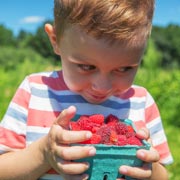 In our last post, we asked “is a vegetarian diet safe for your children?” and, in essence, the answer was yes, so long as they get all the nutrients they need. What’s more, we discovered a huge range of benefits of vegetarianism. These included significant benefits to both health and to the planet. In today’s post, we’ll follow up by looking at the types of food groups, vitamins and minerals that are essential for children as part of a well-balanced vegetarian diet.
In our last post, we asked “is a vegetarian diet safe for your children?” and, in essence, the answer was yes, so long as they get all the nutrients they need. What’s more, we discovered a huge range of benefits of vegetarianism. These included significant benefits to both health and to the planet. In today’s post, we’ll follow up by looking at the types of food groups, vitamins and minerals that are essential for children as part of a well-balanced vegetarian diet.
Infant Milk
While little ones are still drinking milk and haven’t yet moved onto solids, it’s fairly simple. Breast milk will obviously contain just about everything a baby or toddler could want, with one possible exception: Vitamin D. The NHS recommends that breast-fed infants should take a Vitamin D supplement, which is available in easy-to-administer drop form.
 For those on dairy-based formula milk, it’s pretty much plain sailing too. Because vegetarians — as opposed to vegans — are OK eating dairy-based food, formula milk is generally fine for them. The most popular types are based on cows’ milk, although several other animal milks are also available. So long as dairy-based formula milk is high quality, given in the right quantities, consumed at the right intervals and is age appropriate for the child, it contains all the nutrients and vitamins needed. That’s without the need to give additional supplements too.
For those on dairy-based formula milk, it’s pretty much plain sailing too. Because vegetarians — as opposed to vegans — are OK eating dairy-based food, formula milk is generally fine for them. The most popular types are based on cows’ milk, although several other animal milks are also available. So long as dairy-based formula milk is high quality, given in the right quantities, consumed at the right intervals and is age appropriate for the child, it contains all the nutrients and vitamins needed. That’s without the need to give additional supplements too.
The 4 Essential Food Groups After Weaning
Once they’re weaned off milk, a well-balanced diet for children will include food from all four of the main food groups. These are:
1. Dairy
It’s important that dairy products for children are all pasteurised, basically for the good of their health and wellbeing. Infants can have whole (full fat) cow’s milk mixed in with food or added during cooking, but must not use it as a drink until they’re a year old. We’ll go into much more detail in our milk guide next month. Dairy products are wonderful sources of calcium, Vitamin D and other nutrients.
2. Fruit & Vegetables
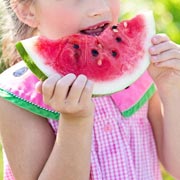 Fruit and vegetables are really a given because they pack so much goodness, including many vitamins, minerals like potassium and also fibre. Fresh vegetables and fruit are ideal but, failing that, frozen, tinned and even dried varieties are also OK.
Fruit and vegetables are really a given because they pack so much goodness, including many vitamins, minerals like potassium and also fibre. Fresh vegetables and fruit are ideal but, failing that, frozen, tinned and even dried varieties are also OK.
3. Starch
Starchy foods provide energy by breaking down glucose as well as providing a range of nutrients like iron, calcium, folate and B vitamins. They are also another source of fibre, which is important for digestive health. Starchy foods include pasta, bread, potato, grains and cereal like oats. Wholegrain varieties are generally best for human health.
4. Protein
Protein is a little more complex for vegetarians, simply because they don’t eat the most obvious sources of it — meat, fish and seafood. However, there are lots of sources of protein, as we’ll see shortly. Protein is essential as a key building block for the body. It builds muscles, bones, hair, nails, tissues and organs as well as providing Omega-3 fatty acids, iron and amino acids. Health professionals recommend that children and adults get protein from a variety of different sources and have at least two portions of protein per day.
Sources of protein that are suitable for vegetarians include:
 Tofu, also known as bean curd, which is made from soy.
Tofu, also known as bean curd, which is made from soy.- Lentils and pulses, including peas, beans, chickpeas, sugar snaps etc.
- Houmous, made from chickpeas, is also therefore a good source of protein but ensure only the smoothest variety is given to infants, so as to avoid possible choking.
- Grains contain protein, but should be served in ground form for very young infants, again so as to avoid possible choking. Examples include oats, barley, rice and quinoa. Quinoa is unique in containing all nine essential amino acids.
- Nuts are also a great source of protein but should be served to infants in smooth ‘butter’ form to avoid choking risks. Examples include peanut butter, almond butter, cashew butter and walnut butter (a great source of Omega-3).
- Seed butters are also great sources of protein.
- Lastly, there is also a cross-over between dairy products (see above) and protein because cheese and yoghurt also contain protein.
- For vegetarians who are OK eating eggs, these are also an excellent source of protein as well as Vitamin B12.
Please note: although great as a source of protein for adults, Quorn is not recommended as a regular meat replacement for children. While it’s great for protein, fibre and making them feel full, it’s low in fat, so will not offer sufficient energy release to children during their early years.
Special Mention: Iron
Iron is incredibly important as part of a healthy, balanced diet for children as well as adults. However, there are certain foods that block its absorption into the body. These include:
- Tea.
- Some whole grains and legumes i.e. those that contain ‘phytates’.
- Dairy foods that contain ‘casein’.
- Eggs and dairy foods containing a specific type of calcium.
In order to counteract this, firstly ensure that the child has a varied diet. In addition to this:
 any pulses, seeds or grains should be sprouted, cooked or soaked before consumption (as appropriate);
any pulses, seeds or grains should be sprouted, cooked or soaked before consumption (as appropriate);- any foods that block iron absorption should be consumed separately to main meals;
- Vitamin C should be included in the meals as this binds to any phytates, thereby neutralising their effect on iron absorption. Citrus fruits, berries and juice (diluted 1 part juice to 10 parts water) are rich in Vitamin C, as are vegetables including broccoli, spinach, greens, asparagus, tomatoes and many others.
We hope that this rough guide to bringing up children as vegetarians has been useful. If so, we recommending reading the NHS’s guidelines for bringing up a healthy child on a vegetarian or vegan diet here. It is also always wise to obtain advice from your child’s health visitor, midwife, doctor or other healthcare professional.
Vegetarian & Vegan Food at Little Cedars Nursery, Streatham

Vegetarians and vegans are well catered for at Little Cedars Nursery. These and any other special diets are supported fully by our in-house chef, who prepares food freshly each day as part of our healthy eating regimen at the setting. Little Cedars is one of the best Streatham nurseries and pre-schools for babies and under-fives. It’s also near Streatham Common, Streatham Hill, Streatham Park, Furzedown, Tooting, Tooting Bec, Tooting Broadway, Tooting Common, Balham, Norbury and Colliers Wood. To register for a nursery place for your child, to arrange a visit or to ask any questions, please contact us and we’ll be happy to help:

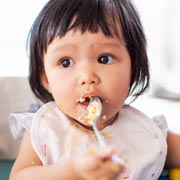 Tofu, also known as bean curd, which is made from soy.
Tofu, also known as bean curd, which is made from soy.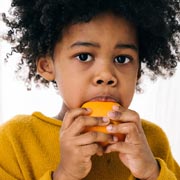 any pulses, seeds or grains should be sprouted, cooked or soaked before consumption (as appropriate);
any pulses, seeds or grains should be sprouted, cooked or soaked before consumption (as appropriate);
 Let’s first take a look at the benefits of vegetarianism …
Let’s first take a look at the benefits of vegetarianism … is linked to a reduction in symptoms for those with asthma;
is linked to a reduction in symptoms for those with asthma; Scientific studies conclude that switching to a vegetarian diet will help the planet enormously. That’s because significantly less greenhouse gas is produced in growing crops compared to raising livestock. What’s more, scientists believe that the necessary reduction in green house gas emissions will be achieved far more swiftly through a widespread switch to vegetarianism than through what’s currently just a gradual shift away from the burning of fossil fuels. Growing crops rather than animals also causes far less pollution in waterways and oceans and also uses significantly less water. The benefits of vegetarianism to the planet are simply enormous.
Scientific studies conclude that switching to a vegetarian diet will help the planet enormously. That’s because significantly less greenhouse gas is produced in growing crops compared to raising livestock. What’s more, scientists believe that the necessary reduction in green house gas emissions will be achieved far more swiftly through a widespread switch to vegetarianism than through what’s currently just a gradual shift away from the burning of fossil fuels. Growing crops rather than animals also causes far less pollution in waterways and oceans and also uses significantly less water. The benefits of vegetarianism to the planet are simply enormous.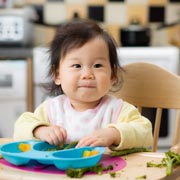 Is a Vegetarian or Vegan Diet Safe for Children?
Is a Vegetarian or Vegan Diet Safe for Children?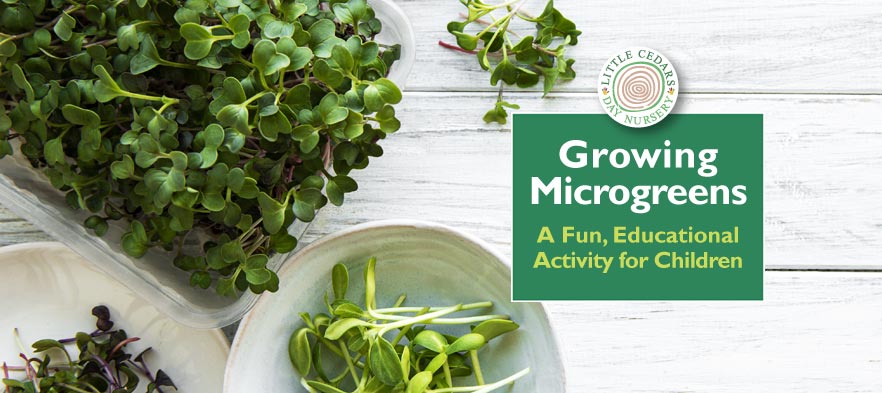
 Back in April last year, we wrote an article about
Back in April last year, we wrote an article about 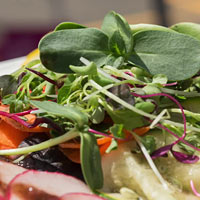 Microgreens are great fun and extremely easy for children to grow. Once ready, they can be used rather like salads and garnishes. They are very tasty and are extremely nutritious.
Microgreens are great fun and extremely easy for children to grow. Once ready, they can be used rather like salads and garnishes. They are very tasty and are extremely nutritious.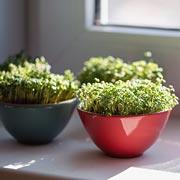 Microgreens are traditionally grown in shallow seed trays, which are inexpensive to buy. However, at home, they can just as easily be grown in flower pots, used yoghurt pots, empty egg cartons, the trays from ready-meals or even cut-down cardboard cores from kitchen rolls. So long as water is allowed to drain from them and they can support at least a shallow depth of compost, these can all be suitable. Plastic cartons will need a few holes punched in the bottom to allow for drainage, so parents might need to organise that in order to avoid their children hurting themselves. Other than that, it’s plain sailing for supervised children to do themselves.
Microgreens are traditionally grown in shallow seed trays, which are inexpensive to buy. However, at home, they can just as easily be grown in flower pots, used yoghurt pots, empty egg cartons, the trays from ready-meals or even cut-down cardboard cores from kitchen rolls. So long as water is allowed to drain from them and they can support at least a shallow depth of compost, these can all be suitable. Plastic cartons will need a few holes punched in the bottom to allow for drainage, so parents might need to organise that in order to avoid their children hurting themselves. Other than that, it’s plain sailing for supervised children to do themselves. Suitable seeds include: rocket, a type of strongly-flavoured lettuce; beetroot, with their lovely red stems and mild, earthy taste; spinach, which also has a mild flavour and is full of goodness; red cabbage, which is also rich in a variety of vitamins and minerals; fennel, which will have a distinctive aniseed flavour; broccoli, which will grow into sprouts that have a slightly spicy taste; radish seeds, which also grow into leaves that taste a little fiery; and also mustard seeds (for children who are OK with even more hot, spicy flavours).
Suitable seeds include: rocket, a type of strongly-flavoured lettuce; beetroot, with their lovely red stems and mild, earthy taste; spinach, which also has a mild flavour and is full of goodness; red cabbage, which is also rich in a variety of vitamins and minerals; fennel, which will have a distinctive aniseed flavour; broccoli, which will grow into sprouts that have a slightly spicy taste; radish seeds, which also grow into leaves that taste a little fiery; and also mustard seeds (for children who are OK with even more hot, spicy flavours). First, your child should fill the seed trays, flower pots or equivalent, almost to the top, with some compost.
First, your child should fill the seed trays, flower pots or equivalent, almost to the top, with some compost.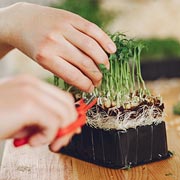 As as shoots begin to appear (usually after just a few days), remove any covering if used and continue to ensure that the compost is always kept moist, but not over-watered.
As as shoots begin to appear (usually after just a few days), remove any covering if used and continue to ensure that the compost is always kept moist, but not over-watered.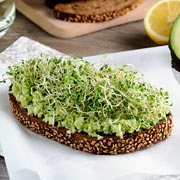 Once harvested, they should be rinsed to get rid of any stray compost. They are delicious to eat and, depending on the seeds grown, have a huge variety of tastes and colours. Children and parents alike can benefit from the nutritious and tasty shoots as part of a variety of meal types. Full of vitamins and minerals, they can be used in salads, as pizza toppings, garnishes, toppings for risottos, soups and pastas, as fillings in sandwiches, sprinkled on top of baked potatoes or into burgers and much more. They’re very adaptable and, with their distinctive tastes and textures, will make any meal really special.
Once harvested, they should be rinsed to get rid of any stray compost. They are delicious to eat and, depending on the seeds grown, have a huge variety of tastes and colours. Children and parents alike can benefit from the nutritious and tasty shoots as part of a variety of meal types. Full of vitamins and minerals, they can be used in salads, as pizza toppings, garnishes, toppings for risottos, soups and pastas, as fillings in sandwiches, sprinkled on top of baked potatoes or into burgers and much more. They’re very adaptable and, with their distinctive tastes and textures, will make any meal really special.
 We previously covered
We previously covered  Motor dysgraphia is primarily the result of poor fine motor skills and poor dexterity, making the control needed for legible writing or drawings difficult. It may also be the result of poor muscle tone. In contrast to dyslexic dysgraphia, motor dysgraphia may result in poor writing legibility even when the words are copied. Spelling, however, is not adversely affected. Short bursts with unusually high concentration levels may result in better letter and word formation, but the level of concentration needed to achieve this is unsustainable over a longer period.
Motor dysgraphia is primarily the result of poor fine motor skills and poor dexterity, making the control needed for legible writing or drawings difficult. It may also be the result of poor muscle tone. In contrast to dyslexic dysgraphia, motor dysgraphia may result in poor writing legibility even when the words are copied. Spelling, however, is not adversely affected. Short bursts with unusually high concentration levels may result in better letter and word formation, but the level of concentration needed to achieve this is unsustainable over a longer period. sgraphic children may also hold their writing instruments in an unusual way or have strange posture when writing;
sgraphic children may also hold their writing instruments in an unusual way or have strange posture when writing; Diagnosing Dysgraphia
Diagnosing Dysgraphia At education settings, additional bespoke learning strategies and interventions, that all teaching professionals can employ, may include:
At education settings, additional bespoke learning strategies and interventions, that all teaching professionals can employ, may include: Childcare/teaching professionals and parents/guardians should always work together and compare notes, so that all parties are fully informed about any challenges the child may have. By doing so, they can share strategies and each work with the child towards the same goals. It’s important to begin such work as early as possible, so that the impact of the disorder on the child’s life is minimised. Early diagnosis is therefore crucial.
Childcare/teaching professionals and parents/guardians should always work together and compare notes, so that all parties are fully informed about any challenges the child may have. By doing so, they can share strategies and each work with the child towards the same goals. It’s important to begin such work as early as possible, so that the impact of the disorder on the child’s life is minimised. Early diagnosis is therefore crucial.
 Your Right to Unpaid Parental Leave
Your Right to Unpaid Parental Leave For example, there may come a time when parents need to look at nurseries, pre-schools, primary and secondary schools and, as children approach their mid teens, further education settings. Other reasons to take time off might include time for parents to visit relatives with the children, or to investigate extra-curricular activities such as sports clubs, or simply to spend quality time with their children.
For example, there may come a time when parents need to look at nurseries, pre-schools, primary and secondary schools and, as children approach their mid teens, further education settings. Other reasons to take time off might include time for parents to visit relatives with the children, or to investigate extra-curricular activities such as sports clubs, or simply to spend quality time with their children. It doesn’t really matter if you change jobs. The rules around unpaid parental leave apply in relation to your child(ren); not your employer. So, if you change jobs and have already used up 9 weeks of unpaid leave for one child during your previous job, then you can still use another 9 weeks, so long as it’s taken before your child reaches the age of 18.
It doesn’t really matter if you change jobs. The rules around unpaid parental leave apply in relation to your child(ren); not your employer. So, if you change jobs and have already used up 9 weeks of unpaid leave for one child during your previous job, then you can still use another 9 weeks, so long as it’s taken before your child reaches the age of 18. To claim a period of unpaid parental leave, just 21 days (3 weeks) of notice must be given to the employer and this must state the start and finish dates. It can be confirmed verbally although employers may request the notice in writing.
To claim a period of unpaid parental leave, just 21 days (3 weeks) of notice must be given to the employer and this must state the start and finish dates. It can be confirmed verbally although employers may request the notice in writing.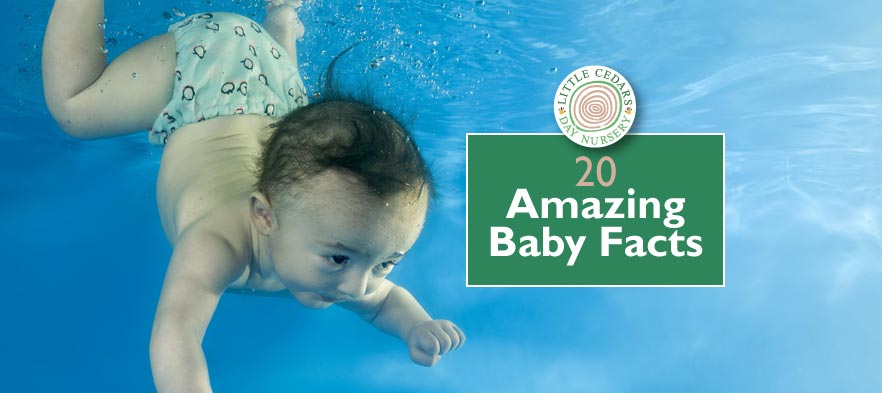
 3. Almost 50% More Bones Than Adults
3. Almost 50% More Bones Than Adults 6. Not So Hot on Eye Sight
6. Not So Hot on Eye Sight 9. Natural Born Swimmers (… Kind of)
9. Natural Born Swimmers (… Kind of) 14. Is Breast Really is Best?
14. Is Breast Really is Best? 16. The Only Smiling Primate
16. The Only Smiling Primate 19. Outcomes of Being First Born
19. Outcomes of Being First Born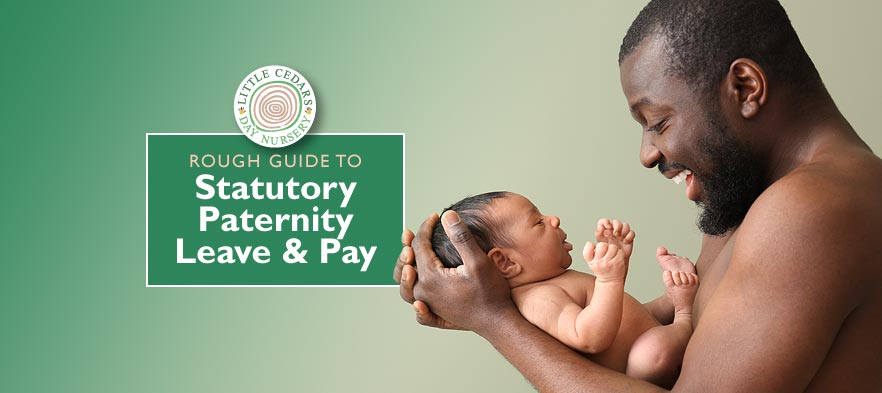
 Following up from our
Following up from our  The father, or partner of the mother, must give their employer at least 15 weeks’ advance notice that they wish to take Statutory Paternity Leave. This can be imprecise, however, given that they won’t be 100% certain which day the child(ren) will be born. If they later change the proposed date, employers must be given at least 28 days (4 weeks) notice of the change, made in writing if requested by the employer.
The father, or partner of the mother, must give their employer at least 15 weeks’ advance notice that they wish to take Statutory Paternity Leave. This can be imprecise, however, given that they won’t be 100% certain which day the child(ren) will be born. If they later change the proposed date, employers must be given at least 28 days (4 weeks) notice of the change, made in writing if requested by the employer. the child’s father, or
the child’s father, or To be eligible for Statutory Paternity Pay, a person needs to:
To be eligible for Statutory Paternity Pay, a person needs to: The payments are made through their wages by the employer after deducting any tax and National Insurance if due. (Figures correct at September 2021).
The payments are made through their wages by the employer after deducting any tax and National Insurance if due. (Figures correct at September 2021).
 Today, we’ll take a look at how much time and money mothers are entitled to under Statutory Maternity Leave and what the eligibility requirements are. We’ll concentrate purely on the rules for mothers who are employees in this post. However, we will follow up to cover paternity leave, shared leave and support for self-employed mothers separately, in future guides.
Today, we’ll take a look at how much time and money mothers are entitled to under Statutory Maternity Leave and what the eligibility requirements are. We’ll concentrate purely on the rules for mothers who are employees in this post. However, we will follow up to cover paternity leave, shared leave and support for self-employed mothers separately, in future guides. The good news is that, to be eligible for Statutory Maternity Leave in the UK, just two main rules apply. You need to:
The good news is that, to be eligible for Statutory Maternity Leave in the UK, just two main rules apply. You need to: Statutory Maternity Pay (‘SMP’) is available to mothers who:
Statutory Maternity Pay (‘SMP’) is available to mothers who: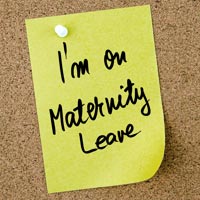 There’s a great online tool that you can use to check whether you are eligible to claim maternity/paternity leave and pay (as well as Maternity Allowance, which may help self-employed mums). It’ll also calculate how much you could receive. Head over to
There’s a great online tool that you can use to check whether you are eligible to claim maternity/paternity leave and pay (as well as Maternity Allowance, which may help self-employed mums). It’ll also calculate how much you could receive. Head over to 
 Being let loose with coloured paints, art materials and creative opportunities is sure to bring a smile to their faces and a sense of enormous fun, creativity and discovery. No doubt too; they’ll be proud to show others their creations!
Being let loose with coloured paints, art materials and creative opportunities is sure to bring a smile to their faces and a sense of enormous fun, creativity and discovery. No doubt too; they’ll be proud to show others their creations! As well as being enormous fun, messy play allows children to express themselves in unbounded creative ways. That’s important. Self-expression and creativity will help children to gain a sense of achievement and, through this subtle way, a greater sense of self-worth and confidence.
As well as being enormous fun, messy play allows children to express themselves in unbounded creative ways. That’s important. Self-expression and creativity will help children to gain a sense of achievement and, through this subtle way, a greater sense of self-worth and confidence. Hand-eye coordination will also benefit, of course.
Hand-eye coordination will also benefit, of course.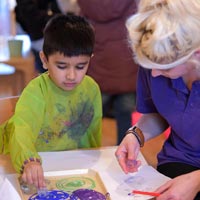 We fully understand the many benefits of messy play at Little Cedars Nursery, of course. Indeed, it’s part of the curriculum. Under-fives are encouraged to learn through messy play using an enormous wealth of resources, equipment and materials at the setting. That’s both indoors and in our outside play areas. From paint and paper indoors to sandpits and water play outside, toddlers and preschoolers have a wonderful time with messy play at Little Cedars, all in a safe, structured, fun and educational environment.
We fully understand the many benefits of messy play at Little Cedars Nursery, of course. Indeed, it’s part of the curriculum. Under-fives are encouraged to learn through messy play using an enormous wealth of resources, equipment and materials at the setting. That’s both indoors and in our outside play areas. From paint and paper indoors to sandpits and water play outside, toddlers and preschoolers have a wonderful time with messy play at Little Cedars, all in a safe, structured, fun and educational environment.
